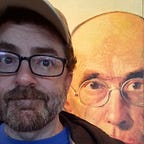Yes, “Kung Flu” is very racist. And there is a history.
Calle de los Negros was an infamous street in Los Angeles that had a history of violence, including public lynchings of Black and Mexican residents. But, by the 1870s, there was a new target: Chinese immigrants.
Chinese immigrants in Los Angeles had made Calle de los Negros their home. Not that it was a choice, it was one of the only areas in town where they were allowed to settle.
On October 24, 1871, an officer whistled for help while patrolling Calle de los Negros with a white rancher named Robert Thompson after shots rang out on the street between two rival Chinese companies. Thompson was shot in the crossfire. White mobs then descended on the street attacking any Chinese immigrant they could find, burning homes and beating and murdering as many people as possible. The bodies of Chinese men were hanging from buildings all across Los Angeles. It is estimated that between 19 and 30 Chinese men and boys were murdered on that day in what would come to be known as “The Chinese Massacre of 1871.” This is considered by some historians to be the largest mass lynching in history.
Discrimination and racism against Chinese immigrants on the West Coast were extremely high. And the situation was volatile. A newspaper in San Francisco referred to the massacre as “amusement:”
The Gold Rush first started bringing Chinese immigrants to America. The immigration increased when Chinese laborers were recruited to build the first transcontinental railroad. Chinese immigrants, mainly men, came in huge numbers and, under extremely harsh conditions, built the transcontinental line from the West. This led to animosity among American workers who saw this influx of immigrants as a threat, especially during the two recessions of the 1860s.
Chinese immigrants were known in newspapers as “Chinamen,” but there were more popular derogatory words used to describe them — such as “yellowmen” and “chinks.” Plus, pejoratives were often formed from taking Chinese words themselves and turning them into slurs. “Chop suey” for example, was turned into a slur.
And yes, “kung fu” as well.
A popular pastime in Western communities was attacking Chinese men and cutting off their “queue” (or “cue”), the long hair braid typical of Chinese men at the time.
In 1884, the town of Rock Springs, Wyoming became the epicenter of another incident involving anti-Chinese racism. After a fight broke out in the mine, a Chinese miner was killed with a pickaxe to the head. After the fight was broken up by the foreman of the mine, the white miners went home to get their weapons and then descended on the Chinese section of town. Houses were burned, possessions destroyed. At least 30 Chinese workers were shot, burned, or hanged and the rest were driven from town.
Two years before the massacre, white residents had unofficially renamed the town of Rock Springs as “Whitemen’s Town.”
Violence did not stop after the Rock Springs Massacre, but continued all over the western states and territories. In Hell’s Canyon, Oregon, 34 Chinese miners were ambushed and killed there in 1887. Today, that area is known as “Chinese Massacre Cove.”
Denver’s first recorded “race riot” occurred on Halloween in 1880. Some 3,000 white people descended on “Hop Alley” — in Denver’s Chinatown — yelling “Stamp out the yellow plague,” as they destroyed Chinese homes and businesses.
The result of this Anti-Chinese sentiment was that Congress passed the “Chinese Exclusion Act” in 1882, banning Chinese immigration to the United States completely. This led to further anti-Asian measures on the state level. In California, Chinese and other Asian immigrants were denied the right of ever becoming citizens of the United States. They were stripped of the right to own land, as well.
As a result, Asian immigrants effectively became “Aliens Ineligible to Citizenship.” And this applied not just to Chinese immigrants, but also Japanese as well. By the start of the Second World War, though, three-quarters of the people of Japanese ancestry were citizens because they were born here. But their parents were prohibited from being citizens by law.
Even citizenship did not protect them from being placed in camps during the war, however.
At the turn of the century, cases of bubonic plague appeared in China and then in other places across the world. In 1900, the bubonic plague broke out in San Francisco, after first taking hold in Hawaii. The first victim in San Francisco was a man living in Chinatown. Newspapers all over the country and the world started referring to this outbreak as the “Chinese Plague.”
Chinese immigrants were blamed, of course, and Chinatown was placed on quarantine. Some papers even referred to the plague as a “hoax” while others recommended the burning down of all Chinatowns. In Honolulu, they did just that. Chinatown was burned on January 20, 1900, destroying over 4,000 homes. The fire raged for 14 days.
In our history, language has led to discrimination and violence.
Over the last several months, violence and hate crimes against Asian Americans have increased. In New York, a “Chinatown Block Watch” needed to be created to protect Asian-Americans from harassment and to document hate crimes.
This pandemic has brought out the worst in people, who have taken to targeting Asian-Americans with taunts involving slurs and declarations that they do not belong here. Just between March and April alone, some 1,700 incidents of anti-Asian hate had been recorded.
Words do have consequences. And they also have a history.
Calling Covid-19 the “Chinese Virus,” the “Wuhan Virus” and, in particular, “Kung Flu” are drawn from a disgusting and racist element of our history in which we, as a people, have accepted racially charged language to point blame.
It’s 2020.
And we are still doing it.
